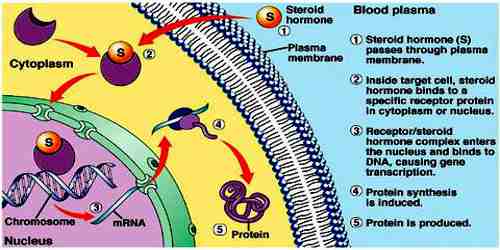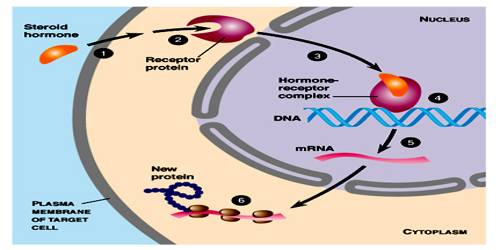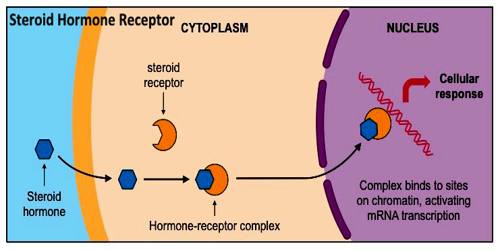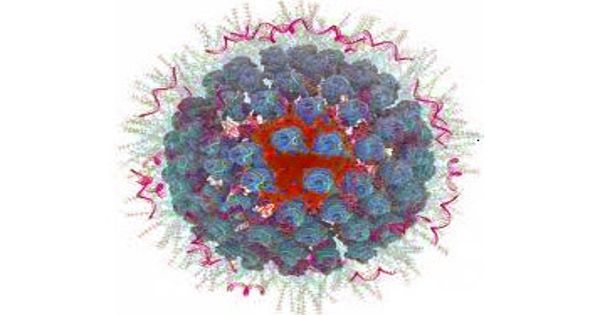Steroid Hormone Receptor
Definition
Steroid hormone receptor includes 48 receptors for the gonadal and adrenal steroids, nonsteroidal ligands such as thyroid hormones, vitamin D, retinoic acid, and fatty acids, as well as numerous “orphan” receptors whose endogenous ligands, if necessary, are either as yet unknown or being identified.4, 5 Until late 1996, only one ER was thought to mediate the physiological effects of estrogens.

Steroid hormone receptors are proteins that have a binding site for a particular steroid molecule. Their response elements are DNA sequences that are bound by the complex of the steroid bound to its receptor. The best studied steroid hormone receptors are members of the nuclear receptor subfamily 3 (NR3) that include receptors for estrogen (group NR3A) and 3-ketosteroids (group NR3C). In addition to nuclear receptors, several G protein-coupled receptors and ion channels act as cell surface receptors for certain steroid hormones.
Transcriptional repression by steroid hormone receptors is mediated by the recruitment of corepressors. These molecules can function by competing with coactivators for the LBD on steroid receptors. This is the mechanism for the selective estrogen receptor corepressor REA (repressor of estrogen action), which directly competes with SRC1. Other transcriptional corepressors, however, bind the LBD either in the absence of ligand or in the presence of antagonists.
Structure and Functions of Steroid Hormone Receptor
Steroid hormone receptors regulate gene function, it is important to know the structure of the receptor proteins as well as the identity and cellular function of the genes that they regulate. Members of the steroid receptor superfamily share direct amino acid homology and a common structure. Receptors in this superfamily contain several key structural elements which enable them to bind to their respective ligands with high affinity and specificity, recognize and bind to discrete response elements within the DNA sequence of target genes with high affinity and specificity, and regulate gene transcription.

The transcription of DNA to messenger RNA (mRNA) is the most important process regulated by steroid hormones. All genes share a common basic design, composed of a structural region in which the DNA encodes the specific amino acids of the protein, and a regulatory region that interacts with various proteins to control the rate of transcription. Several key elements in the regulatory region of the target gene must be activated before mRNA synthesis can occur.
SHRs are intracellular transcription factors that can be activated, among other possibilities, by the specific and high affinity binding of ligand to exert positive or negative effects on the expression of target genes. Binding of agonistic or antagonistic ligands leads to different allosteric changes of SHRs making them competent to exert positive or negative effects on the expression of target genes by different mechanisms.
A new class of steroid hormone receptors has recently been elucidated and these new receptors are found on the cell membrane. New studies suggest that along with the well documented intracellular receptors that cell membrane receptors are present for several steroid hormones and that their cellular responses are much quicker than the intracellular receptors.
Reference:
















